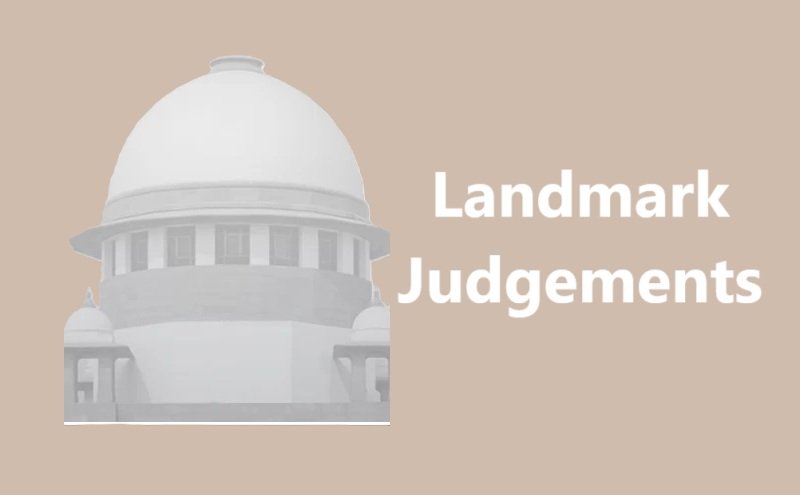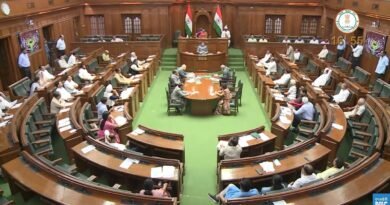Common Cause v. Union of India (2018) Case
Introduction
The case of Common Cause v. Union of India (2018) is a significant landmark decision in the Indian legal system, which brought about a paradigm shift in the practice of active euthanasia in India. The Supreme Court of India, through this case, delved deep into issues related to the right to life, personal autonomy, and the role of the state in determining matters of life and death. It addressed the question of whether an individual has the constitutional right to make decisions regarding their own death, especially in the context of terminal illness.
This article will explore the background, legal issues, arguments, and the court’s reasoning in this case. It will also discuss its implications on both the legal landscape and the broader societal discourse on euthanasia and individual autonomy.
1. Background of the Case
In 2014, an NGO called Common Cause filed a Public Interest Litigation (PIL) before the Supreme Court of India, challenging the constitutional validity of Section 309 of the Indian Penal Code (IPC), which criminalized attempted suicide. The petitioners argued that the law violated the fundamental right to life and personal liberty guaranteed under Article 21 of the Indian Constitution. The petitioners also sought the legal recognition of passive euthanasia (withdrawing life-sustaining treatment) and a living will, which would allow individuals to express their desire to avoid medical intervention in case they are terminally ill or in a persistent vegetative state.
At the heart of the case was the question of whether individuals, in certain circumstances, should have the right to choose to end their life in a dignified manner, especially when they are suffering from a terminal illness or unrelievable pain.
2. Legal Issues in the Case
The case raised several critical legal issues:
- The Right to Life and Personal Liberty (Article 21): Whether the right to life includes the right to die with dignity, and whether the prohibition of euthanasia violates this right.
- Constitutionality of Section 309 of the IPC: Whether the provision criminalizing attempted suicide is constitutional, particularly when a person’s life may be riddled with unbearable suffering.
- Active vs. Passive Euthanasia: The distinction between active euthanasia (causing death through direct intervention) and passive euthanasia (withholding or withdrawing medical treatment to allow natural death).
- Living Will: Whether individuals should have the legal right to execute a “living will,” which documents their decision to refuse life-prolonging medical treatment under certain conditions.
3. Court’s Judgment and Reasoning
The bench of Justices A. K. Sikri, D. Y. Chandrachud, and Ashok Bhushan delivered a historic judgment on March 9, 2018, in which the Supreme Court made significant strides in addressing the issue of euthanasia in India. The judgment can be divided into the following key aspects:
3.1. Decriminalization of Attempted Suicide (Section 309 of IPC)
The Court did not immediately strike down Section 309 of the IPC, but it did recommend that the Government of India take steps to decriminalize attempted suicide. It recognized that people who attempt suicide often do so out of mental distress, and that criminalizing such actions adds to their suffering rather than helping them.
The Court emphasized that mental health should be a key factor in determining whether criminal liability should apply to those who attempt suicide. The judgment recognized the importance of mental health treatment and decriminalizing suicide attempts in a way that allows for medical intervention rather than penal punishment.
3.2. Right to Die with Dignity
The Court ruled that the right to life under Article 21 of the Indian Constitution includes the right to live with dignity, which extends to the right to die with dignity in certain circumstances. In doing so, the Court acknowledged that when a person is terminally ill or in an irreversible coma, they should have the right to refuse life-sustaining treatment or to seek euthanasia, provided that the process adheres to strict safeguards.
3.3. Passive Euthanasia and Advance Directives
One of the most important outcomes of the case was the recognition of passive euthanasia. The Court concluded that while active euthanasia (intentional killing) remains illegal in India, passive euthanasia (withholding or withdrawing medical treatment) is permissible under the right to live with dignity. This allows terminally ill patients or individuals in a persistent vegetative state to die naturally, without being subjected to the mechanical prolongation of life through artificial means.
In line with this, the Court also gave its nod to the concept of a “living will,” a document in which a person expresses their wishes regarding medical treatment and whether they wish to continue or discontinue life-support treatment in case of terminal illness or if they fall into a vegetative state. The Court laid down guidelines for the creation and implementation of such living wills, which require the approval of a medical board to ensure that the decision is made in the best interest of the patient.
3.4. Safeguards and Procedural Requirements
In order to prevent abuse of the ruling, the Court established several safeguards and procedures to ensure that passive euthanasia is carried out in a responsible and ethical manner. These safeguards included:
- A medical board consisting of a minimum of three doctors, including a specialist in the relevant field, to evaluate the condition of the patient and decide whether passive euthanasia is appropriate.
- Clear guidelines for the execution of living wills, ensuring that the wishes of the individual are respected and that there is no external influence.
- Court intervention in cases of passive euthanasia to ensure that the process is carried out in a transparent and just manner.
4. Implications of the Judgment
The judgment in Common Cause v. Union of India (2018) had far-reaching implications, both legal and social.
4.1. Legal Impact
The decision clarified the legal position on euthanasia in India. It differentiated between active and passive euthanasia, reaffirming the legal ban on active euthanasia while permitting passive euthanasia under strict guidelines. The recognition of living wills and advance directives marked a major development in the area of personal autonomy and the right to make decisions about one’s life and death.
4.2. Ethical and Moral Considerations
The ruling also sparked significant debates on the ethical and moral aspects of euthanasia. While many lauded the judgment as a step towards respecting human dignity and autonomy, others raised concerns about the potential for misuse and the societal implications of permitting euthanasia. The safeguards imposed by the Court were seen as a way to balance these concerns with the rights of individuals.
4.3. Societal Impact
On a broader societal level, the judgment sparked a discourse on death, dying, and human dignity in India. It invited conversations around the quality of life, healthcare, and the role of medical professionals in end-of-life care. The issue of euthanasia remains controversial, and the judgment prompted calls for broader public discussions to arrive at a consensus on the ethical and legal aspects of euthanasia.
5. Conclusion
The Common Cause v. Union of India (2018) case was a landmark ruling that reshaped the legal landscape regarding euthanasia in India. By recognizing the right to die with dignity and permitting passive euthanasia under strict safeguards, the Supreme Court advanced the understanding of personal autonomy and human dignity in the context of death. While the ruling has been hailed as a progressive step, it also highlights the ongoing ethical, legal, and societal debates surrounding euthanasia.
Ultimately, the judgment underscores the importance of a compassionate approach to end-of-life issues, with a focus on human dignity, medical ethics, and respect for individual choices. It represents a significant development in the right to die discourse, but also signals the need for ongoing reflection and debate on such complex matters within Indian society.
Recommended: Mohd. Ahmed Khan v. Shah Bano Begum (1985)








Pingback: Landmark Judgments in India | HashStacks